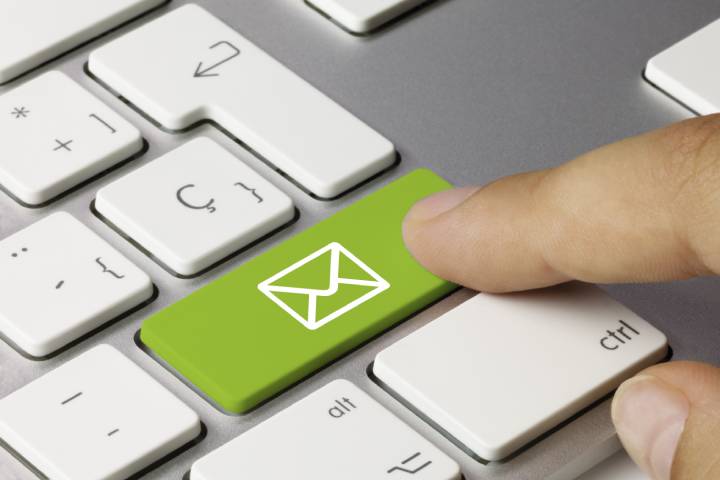Business
How To Improve Your Email Support For Customers
How To Improve Your Email Support For Customers. The Do’s and Don’ts of Email Etiquette, Make It Your Own, Always Use Positive Language

Customers today seek a more convenient and efficient support channel. They do not have the extravagance of time to deal with long queues on the phone turn to email support.
Compared with phone support, emails are not at risk of being misrouted or getting interrupted by connection problems. It’s also easier for customers to review and keep track of their transactions as these are recorded in the Inbox.
As with any customer service channel, email support still needs a lot of improvement to meet the modern consumer’s ever-increasing demands.
The Cloud Tutorial found that only a few businesses offered customer-centric support channels in the past decade in the research they conducted. If you fall into this category, below are some guidelines on how you can achieve higher customer satisfaction through your support channels:
Table of Contents
1. The Do’s and Don’ts of Email Etiquette

Email communication upholds the basic rules of grammar. Proper use of capitalization, punctuation, and language maintains a professional tone in your correspondence with your customer.
Don’t use emojis, abbreviations, slang, and spammer language. Don’t bombard your customers with lengthy, rambling paragraphs. Instead, write short and concise sentences.
More importantly, every interaction should be rooted in customer service’s two critical points: acknowledgement and empathy.
Acknowledge why the customer is writing in and how they feel about it. Most support requests come from customers who are frustrated or agitated due to an ongoing issue. Usually, the first reaction to this kind of situation is to dive into the problem to appease the other party quickly.
Before doing so, take the time to let the customer know that you understand their needs and thank them for the opportunity to lend a hand.
Empathize and listen to your customer. In face-to-face and phone support, active listening is the process of fully understanding, remembering, and interpreting what the speaker is saying.
In non-voice channels like email, this can be done by analyzing the word choice, tone, and other context clues in the message. By listening to their words, you foster a healthy interaction with your customer.
Invest enough time in making a customer feel seen. A customer who feels seen and understood is a more receptive partner in resolving issues.
2. Make It Your Own
Some companies receive hundreds, possibly even thousands, of emails daily. While it’s tempting to use templates or canned replies to cope with the job’s repetitiveness, you should always personalize your responses. The last point you want is for the customer to think that they’re talking to a bot.
The outcome of your correspondence largely depends on how well you can profile your customers. You can get a feel of their personality, temperament, knowledge, and how adept they are with technology within the first few exchanges. This should inform the overall tone of your service.
If their messages sound formal, reply with the same tone. If they appear to be having difficulty following your instructions or explanation, use the classic “explaining to a five-year-old” method. The goal is to have a conversation that sounds natural from start to finish.
3. Always Use Positive Language
Perhaps the most overused phrase in customer service is “I’m sorry”. Practice saying “thank you” instead of apologizing, especially for things that aren’t personally your fault (e.g., defective product or delayed delivery). You can also highlight the positive aspect of your customer’s experience by eliminating negative words.
Consider these examples:
- Instead of “Sorry for making you wait”, say “We appreciate your patience.”
- Instead of “We can’t do that”, say “Here is an alternative or workaround you may try.”
- Instead of “Unfortunately, that’s not available”, say “I have other recommendations that would suit your needs.”
Using the right vocabulary can spell a huge difference and make your customers feel better. In most cases, customers rate your performance not based on what you tell them, but on how you make them feel.
4. Be Extra Sensitive Of Time
Email support may not be considered real-time communication compared with face-to-face or phone support. That said, you should always respond promptly. A frustrated customer won’t be happy waiting long on top of what they’re complaining about.
However, a quick turnaround time should not compromise the quality of your reply. Always make every contact count. Address concerns and answer questions correctly so that the customer won’t have to make follow-ups or repeat themselves.
As an exception to the rule of personalization, you may use templates or auto-replies only when making follow-ups to save time. You may also try bulk replying if you deal with high-volume cases regularly.
Remember, every interaction with a customer reflects your company’s values and the quality of your service. Email support should not only be focused on immediate resolutions. Ultimately, customer satisfaction comes from hassle-free interactions that feel personal and positive.
-

 Instagram4 years ago
Instagram4 years agoBuy IG likes and buy organic Instagram followers: where to buy them and how?
-

 Instagram4 years ago
Instagram4 years ago100% Genuine Instagram Followers & Likes with Guaranteed Tool
-

 Business5 years ago
Business5 years ago7 Must Have Digital Marketing Tools For Your Small Businesses
-

 Instagram4 years ago
Instagram4 years agoInstagram Followers And Likes – Online Social Media Platform















